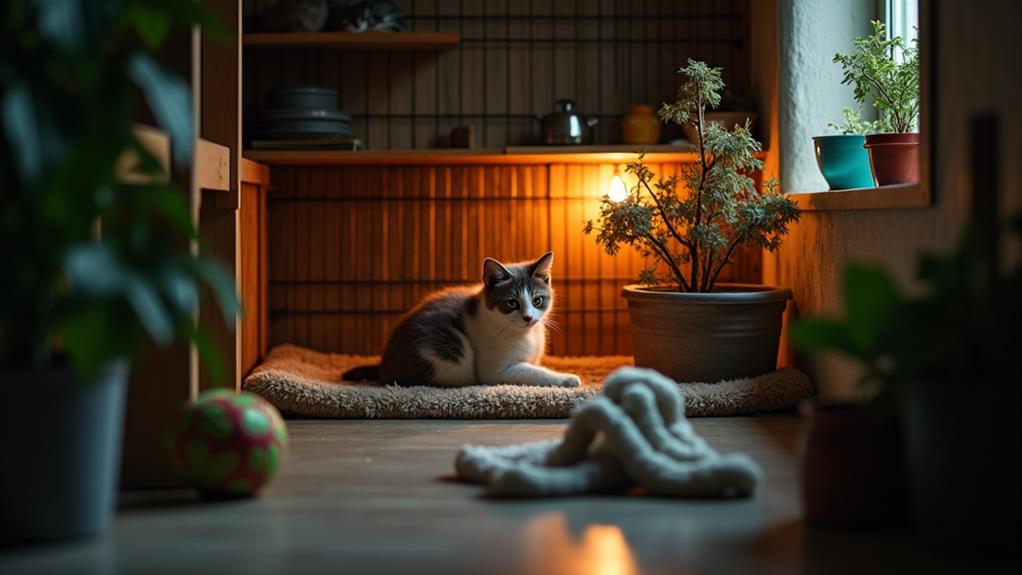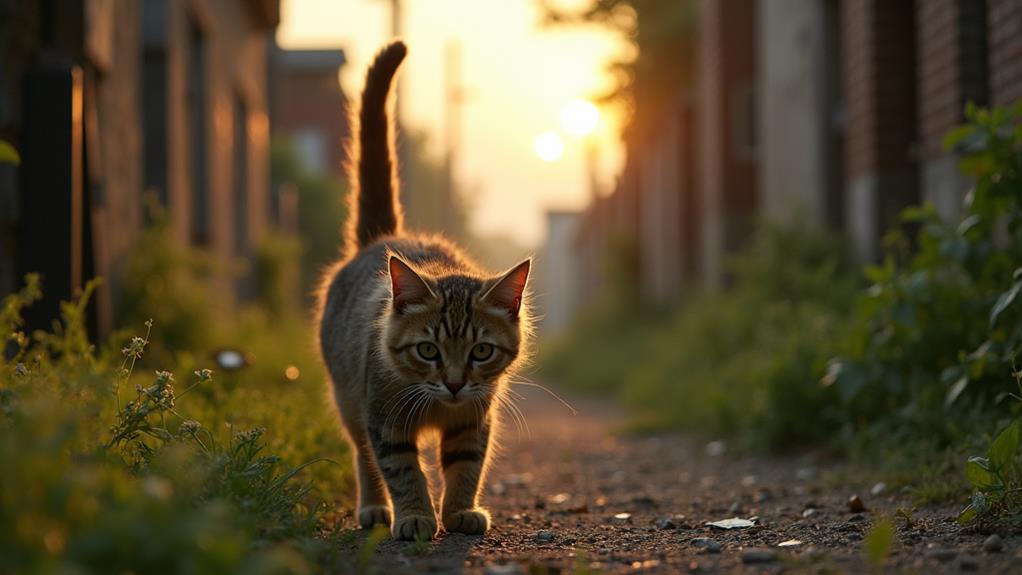How to Litter Train a Feral Cat: Simple Steps for Success
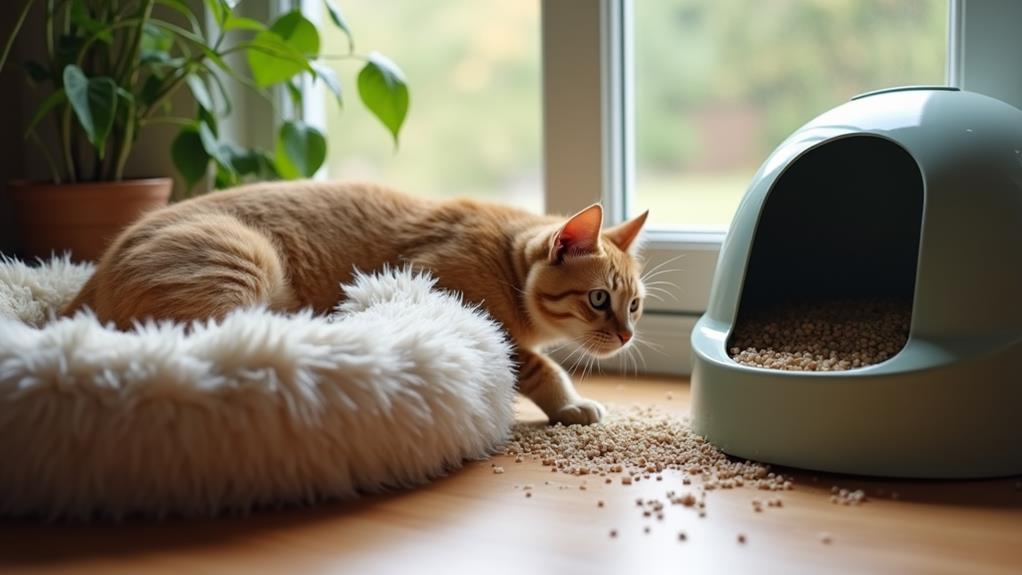
To litter train a feral cat, start by understanding their natural instincts. Use a large, open litter box filled with fine-grained sand or soil to mimic the outdoors. Place it in a quiet, secluded spot. Introduce the cat to the box by placing it inside after meals or naps, allowing investigation. Keep the litter box clean by scooping daily and changing the litter every 1-2 weeks. Use positive reinforcement with treats or affection after successful use. Watch for body language and adjust according to your cat's comfort. Want to fine-tune your approach? There's more to uncover.
Understanding Feral Cat Behavior
When you're trying to litter train a feral cat, it's important to initially understand their behavior. Feral cats aren't accustomed to human environments, so the concept of a litter box may be entirely foreign to them. Their natural instinct is to find quiet, secluded areas for elimination. You can use this behavior to your advantage during training. By selecting a spot that aligns with their instincts, you're more likely to encourage them to use the litter box.
Another vital aspect is substrate preference. Feral cats often favor natural materials like soil or sand. Incorporating these into the litter box can make the change smoother. This natural feel helps them associate the litter box with their preferred elimination spots, fostering a sense of familiarity and comfort.
Setting Up the Litter Box
Your feral cat's comfort with their litter box setup is vital for successful training. Begin by selecting an open, large litter box that accommodates your cat's size, allowing them to easily access it. Feral cats often appreciate environments that resemble the outdoors, so the more spacious the box, the better. Place the litter box in a quiet and low-traffic area of your home. This positioning reduces stress and encourages your cat to use it comfortably without disturbances.
When choosing the types of litter, consider those that mimic natural textures like fine-grained sand or soil. This choice aids in easing their shift from outdoor to indoor toileting. Keep in mind that cleanliness is significant. Scoop the litter box daily and replace the litter every 1-2 weeks to maintain a fresh environment. Consistent cleanliness helps prevent odors and encourages regular use by your feral cat.
If you have several cats, provide multiple litter boxes in different locations. This setup guarantees each cat has their own space, reducing territorial disputes and promoting easy access. By thoughtfully setting up the litter box, you're creating a welcoming environment for your feral cat.
Selecting the Right Litter
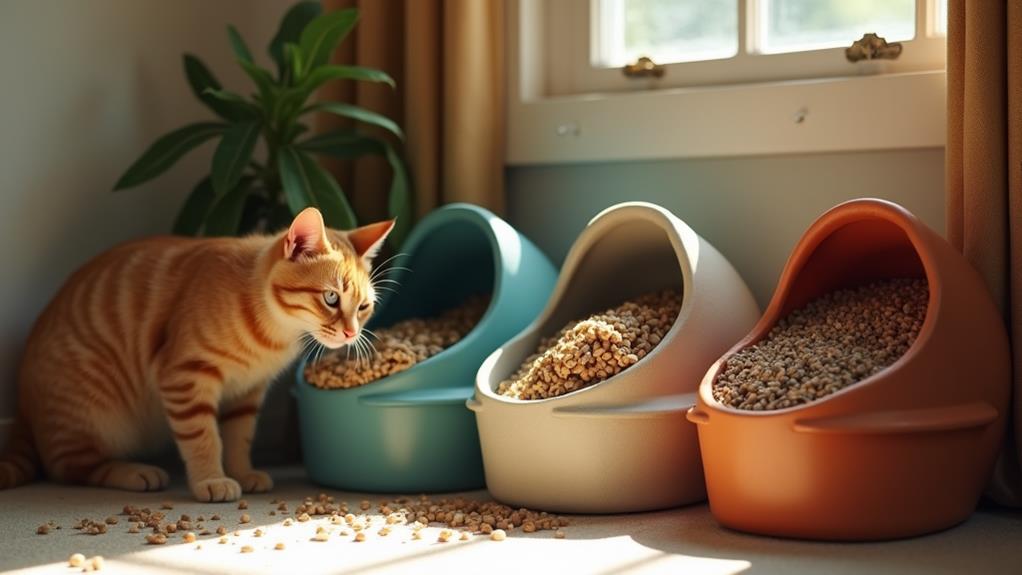
Choosing the right litter for a feral cat is crucial in ensuring they feel comfortable and inclined to use the litter box. You'll want to avoid scented or dusty options, as these can deter your feral cat from using the box and might even cause respiratory issues. Clumping litter is often preferred because it makes cleaning easier, but don't hesitate to experiment with different types. Consider options like clay, crystal, paper, or wood to find what suits your feral cat best.
To ease the adjustment, try providing a litter that mimics the texture of natural soil or sand, as feral cats are often used to eliminating outdoors. Consistency is key; frequent changes in the type of litter can confuse your feline friend and lead to litter box avoidance. So, once you find a type that works, stick with it. Keep an eye on your cat's behavior, and adjust your choice based on their comfort and willingness to use the litter box.
Ideal Box Placement
Finding the perfect spot for your feral cat's litter box can make all the difference in successful litter training. Start by placing the litter box in a quiet, low-traffic area of your home. This minimizes stress and encourages your cat to feel comfortable using the litter box. It's essential to guarantee the box is positioned away from food and water sources. This not only maintains hygiene but also prevents your cat from avoiding the area altogether.
If you notice reluctance from your feral cat in using the litter box, consider gradually moving it to a more accessible location. However, maintain consistency in its general placement to avoid confusion. In a multi-cat household, it's wise to place multiple litter boxes in different areas. This provides options for your cat and reduces any territorial stress they might experience.
Regularly monitor the location for suitability. If your cat eliminates outside the box, reassess the environment for possible deterrents like noise, light, or drafts. By being mindful of these factors, you'll create an inviting and stress-free location that encourages your feral cat to consistently use the litter box.
Introducing the Cat to the Box
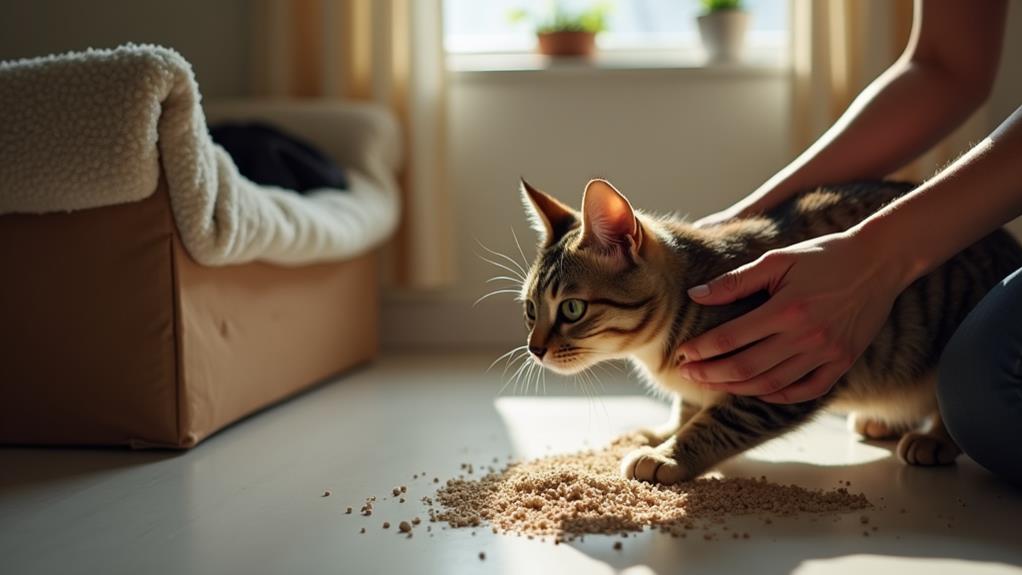
When you initially bring a feral cat into your home, immediately show it the litter box to establish familiarity. This introduction is vital in helping the cat understand where it should go to eliminate. By placing the cat in the litter box after meals, playtime, or waking, you tap into its natural instincts to relieve itself in the designated spot. Let the cat investigate the litter box at its own pace; forcing the cat could lead to negative associations, which you definitely want to avoid.
To make the adjustment smoother, consider using familiar scents. A small amount of outdoor soil or leaves mixed into the litter can evoke a comforting connection for the cat, making it feel more at home. Monitoring your cat's behavior is significant during this period. When it successfully uses the litter box, reward it with positive reinforcement, such as a treat or gentle praise. This reinforcement builds a positive association with the box, encouraging repeated use. Remember, patience is key. Allow the cat the freedom to adjust and investigate without feeling pressured. With these strategies, you're setting the stage for successful litter training.
Maintaining Cleanliness
Keeping the litter box clean is vital for encouraging a feral cat to use it consistently. Start by scooping the litter box daily to remove waste. This simple act is significant in maintaining cleanliness and making the area inviting for your cat. By removing waste each day, you minimize odors and create a more pleasant experience, which is key in litter training.
Change the litter entirely every one to two weeks. When doing this, use an unscented detergent to clean the box thoroughly. This prevents odor buildup, ensuring the box remains a fresh and appealing option for your cat. Also, monitor the litter levels regularly. Keeping the box adequately filled is essential so that your cat feels comfortable using it.
After scooping, dispose of waste in a sealed bag right away. This step helps reduce odors and maintains a hygienic environment for both you and your feline friend. Finally, regularly assess the litter box's location and condition. Make sure it's in a clean, accessible spot and remains an attractive choice for your cat. By focusing on these aspects, you'll improve the effectiveness of your litter training efforts.
Using Positive Reinforcement
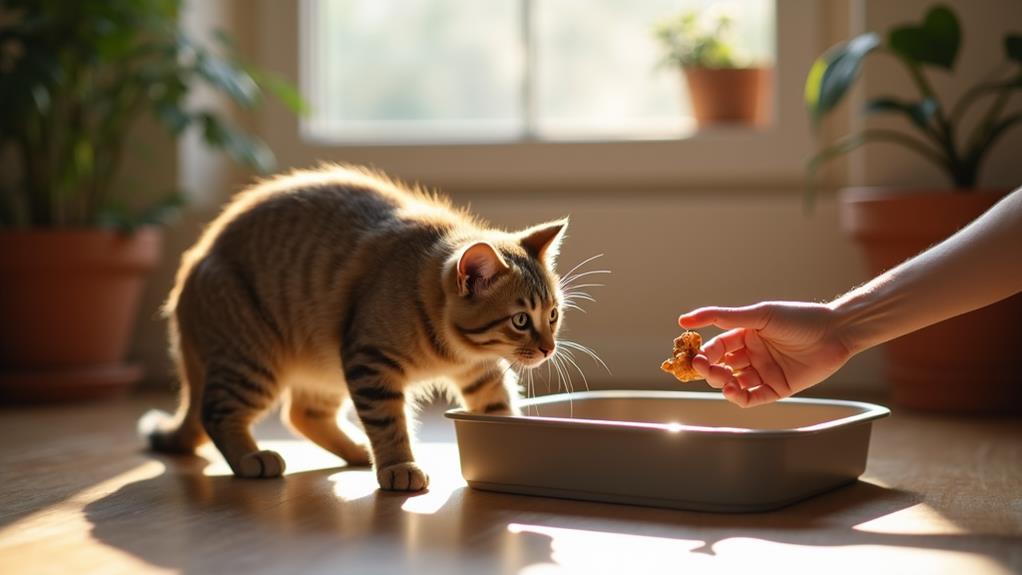
Positive reinforcement plays an essential role in litter training a feral cat, as rewarding your feline friend with treats or affection right after it uses the litter box encourages repeat behavior. By employing a consistent reward system, you help create positive associations with the litter box, making it more likely for the cat to use it regularly. Here's how you can effectively use positive reinforcement:
- Immediate Rewards: As soon as your cat uses the litter box, provide a small treat or gentle affection. This immediate feedback reinforces the behavior you want to encourage.
- Observe and Praise: Watch your cat's body language. If it shows interest in the litter box, offer verbal praise or a light pet, reinforcing its curiosity and willingness to investigate the area.
- Gradual Introduction: Start by introducing the litter box with some soil or familiar outdoor scents. Once your cat uses it, increase the rewards to solidify its new habit.
- Avoid Negative Reactions: If your cat has an accident, remain calm. Punishing it can lead to fear and avoidance, which undermines your training efforts.

